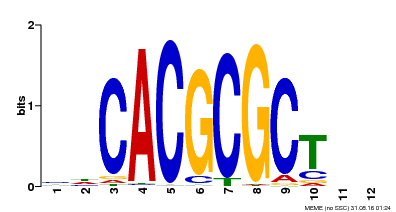- Desnos T,Puente P,Whitelam GC,Harberd NP
FHY1: a phytochrome A-specific signal transducer.
Genes Dev., 2001. 15(22): p. 2980-90
[PMID:11711433] - Wang H,Deng XW
Arabidopsis FHY3 defines a key phytochrome A signaling component directly interacting with its homologous partner FAR1.
EMBO J., 2002. 21(6): p. 1339-49
[PMID:11889039] - Hudson ME,Lisch DR,Quail PH
The FHY3 and FAR1 genes encode transposase-related proteins involved in regulation of gene expression by the phytochrome A-signaling pathway.
Plant J., 2003. 34(4): p. 453-71
[PMID:12753585] - Lin R,Wang H
Arabidopsis FHY3/FAR1 gene family and distinct roles of its members in light control of Arabidopsis development.
Plant Physiol., 2004. 136(4): p. 4010-22
[PMID:15591448] - Zhou Q, et al.
FHL is required for full phytochrome A signaling and shares overlapping functions with FHY1.
Plant J., 2005. 43(3): p. 356-70
[PMID:16045472] - Allen T, et al.
Arabidopsis FHY3 specifically gates phytochrome signaling to the circadian clock.
Plant Cell, 2006. 18(10): p. 2506-16
[PMID:17012604] - Lin R, et al.
Transposase-derived transcription factors regulate light signaling in Arabidopsis.
Science, 2007. 318(5854): p. 1302-5
[PMID:18033885] - Ascencio-Ib
Global analysis of Arabidopsis gene expression uncovers a complex array of changes impacting pathogen response and cell cycle during geminivirus infection.
Plant Physiol., 2008. 148(1): p. 436-54
[PMID:18650403] - Genoud T, et al.
FHY1 mediates nuclear import of the light-activated phytochrome A photoreceptor.
PLoS Genet., 2008. 4(8): p. e1000143
[PMID:18670649] - Lin R, et al.
Discrete and essential roles of the multiple domains of Arabidopsis FHY3 in mediating phytochrome A signal transduction.
Plant Physiol., 2008. 148(2): p. 981-92
[PMID:18715961] - Saijo Y, et al.
Arabidopsis COP1/SPA1 complex and FHY1/FHY3 associate with distinct phosphorylated forms of phytochrome A in balancing light signaling.
Mol. Cell, 2008. 31(4): p. 607-13
[PMID:18722184] - Wang Y, et al.
Transcriptome analyses show changes in gene expression to accompany pollen germination and tube growth in Arabidopsis.
Plant Physiol., 2008. 148(3): p. 1201-11
[PMID:18775970] - Stephenson PG,Terry MJ
Light signalling pathways regulating the Mg-chelatase branchpoint of chlorophyll synthesis during de-etiolation in Arabidopsis thaliana.
Photochem. Photobiol. Sci., 2008. 7(10): p. 1243-52
[PMID:18846290] - Shen Y, et al.
Phytochrome A mediates rapid red light-induced phosphorylation of Arabidopsis FAR-RED ELONGATED HYPOCOTYL1 in a low fluence response.
Plant Cell, 2009. 21(2): p. 494-506
[PMID:19208901] - Reiland S, et al.
Large-scale Arabidopsis phosphoproteome profiling reveals novel chloroplast kinase substrates and phosphorylation networks.
Plant Physiol., 2009. 150(2): p. 889-903
[PMID:19376835] - Li J, et al.
Arabidopsis transcription factor ELONGATED HYPOCOTYL5 plays a role in the feedback regulation of phytochrome A signaling.
Plant Cell, 2010. 22(11): p. 3634-49
[PMID:21097709] - Li G, et al.
Coordinated transcriptional regulation underlying the circadian clock in Arabidopsis.
Nat. Cell Biol., 2011. 13(5): p. 616-22
[PMID:21499259] - Ouyang X, et al.
Genome-wide binding site analysis of FAR-RED ELONGATED HYPOCOTYL3 reveals its novel function in Arabidopsis development.
Plant Cell, 2011. 23(7): p. 2514-35
[PMID:21803941] - Stirnberg P,Zhao S,Williamson L,Ward S,Leyser O
FHY3 promotes shoot branching and stress tolerance in Arabidopsis in an AXR1-dependent manner.
Plant J., 2012. 71(6): p. 907-20
[PMID:22540368] - Tang W, et al.
Transposase-derived proteins FHY3/FAR1 interact with PHYTOCHROME-INTERACTING FACTOR1 to regulate chlorophyll biosynthesis by modulating HEMB1 during deetiolation in Arabidopsis.
Plant Cell, 2012. 24(5): p. 1984-2000
[PMID:22634759] - Huang X, et al.
Arabidopsis FHY3 and HY5 positively mediate induction of COP1 transcription in response to photomorphogenic UV-B light.
Plant Cell, 2012. 24(11): p. 4590-606
[PMID:23150635] - Gao Y, et al.
Arabidopsis FRS4/CPD25 and FHY3/CPD45 work cooperatively to promote the expression of the chloroplast division gene ARC5 and chloroplast division.
Plant J., 2013. 75(5): p. 795-807
[PMID:23662592] - Tilbrook K, et al.
The UVR8 UV-B Photoreceptor: Perception, Signaling and Response.
Arabidopsis Book, 2013. 11: p. e0164
[PMID:23864838] - Tang W, et al.
FAR-RED ELONGATED HYPOCOTYL3 and FAR-RED IMPAIRED RESPONSE1 transcription factors integrate light and abscisic acid signaling in Arabidopsis.
Plant Physiol., 2013. 163(2): p. 857-66
[PMID:23946351] - Jin J, et al.
An Arabidopsis Transcriptional Regulatory Map Reveals Distinct Functional and Evolutionary Features of Novel Transcription Factors.
Mol. Biol. Evol., 2015. 32(7): p. 1767-73
[PMID:25750178] - Chang N,Gao Y,Zhao L,Liu X,Gao H
Arabidopsis FHY3/CPD45 regulates far-red light signaling and chloroplast division in parallel.
Sci Rep, 2015. 5: p. 9612
[PMID:25872642] - Wang C, et al.
SCAB3 Is Required for Reorganization of Actin Filaments during Light Quality Changes.
J Genet Genomics, 2015. 42(4): p. 161-8
[PMID:25953354] - Wang H,Wang H
Multifaceted roles of FHY3 and FAR1 in light signaling and beyond.
Trends Plant Sci., 2015. 20(7): p. 453-61
[PMID:25956482] - Wang W, et al.
A pair of light signaling factors FHY3 and FAR1 regulates plant immunity by modulating chlorophyll biosynthesis.
J Integr Plant Biol, 2016. 58(1): p. 91-103
[PMID:25989254] - Ma L, et al.
Arabidopsis FHY3 and FAR1 Regulate Light-Induced myo-Inositol Biosynthesis and Oxidative Stress Responses by Transcriptional Activation of MIPS1.
Mol Plant, 2016. 9(4): p. 541-57
[PMID:26714049] - Siddiqui H,Khan S,Rhodes BM,Devlin PF
FHY3 and FAR1 Act Downstream of Light Stable Phytochromes.
Front Plant Sci, 2016. 7: p. 175
[PMID:26941752] - Li D, et al.
FAR-RED ELONGATED HYPOCOTYL3 activates SEPALLATA2 but inhibits CLAVATA3 to regulate meristem determinacy and maintenance in Arabidopsis.
Proc. Natl. Acad. Sci. U.S.A., 2016. 113(33): p. 9375-80
[PMID:27469166] - Liu L,Li B,Liu X
FAR-RED ELONGATED HYPOCOTYL3 promotes floral meristem determinacy in Arabidopsis.
Plant Signal Behav, 2016. 11(10): p. e1238545
[PMID:27660915] - Ma L,Xue N,Fu X,Zhang H,Li G
Arabidopsis thaliana FAR-RED ELONGATED HYPOCOTYLS3 (FHY3) and FAR-RED-IMPAIRED RESPONSE1 (FAR1) modulate starch synthesis in response to light and sugar.
New Phytol., 2017. 213(4): p. 1682-1696
[PMID:27859295] - Liu Y, et al.
Light and Ethylene Coordinately Regulate the Phosphate Starvation Response through Transcriptional Regulation of PHOSPHATE STARVATION RESPONSE1.
Plant Cell, 2017. 29(9): p. 2269-2284
[PMID:28842534] - Joly-Lopez Z, et al.
Abiotic Stress Phenotypes Are Associated with Conserved Genes Derived from Transposable Elements.
Front Plant Sci, 2017. 8: p. 2027
[PMID:29250089]
|





